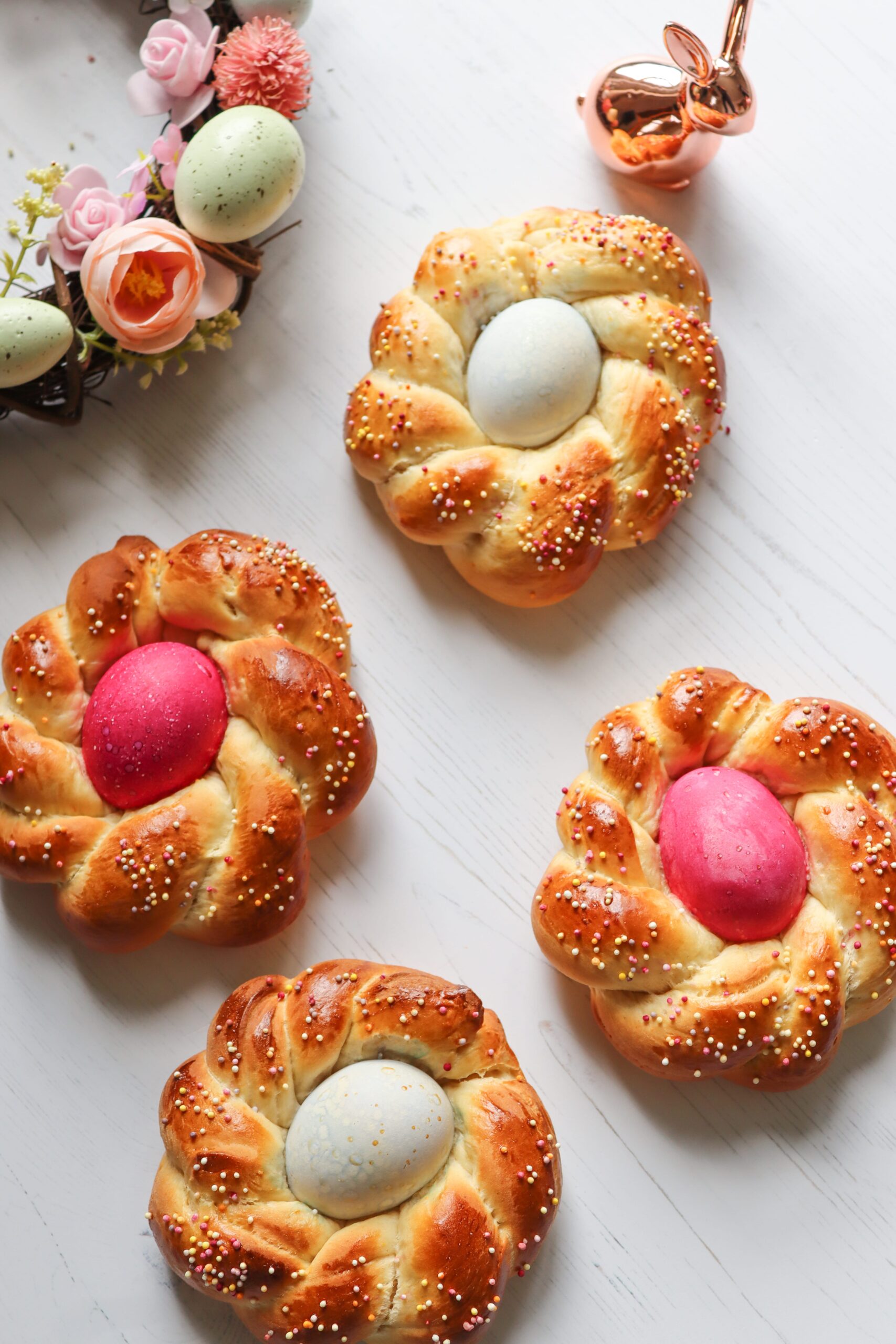
It’s really simple and easy to dye eggs – it’s all about finding the best method that works consistently. When researching and testing how to dye eggs, I’ve found that certain recipes didn’t produce the best results and I soon learned it depends on the concentration or quality of the food colouring.
I’ve found that liquid food colouring takes longer to dye the eggs fully and when used in a baked recipe, the colours fade.
When deciding on food colouring, I highly recommend a food colouring gel. The results produce brighter and vibrant colours as gels tend to be more concentrated and it dyes your eggs quicker.
Another strong suggestion is to use distilled vinegar. Some methods say you can use lemon juice but I highly suggest the vinegar for best results.
If the eggs are not going to be used as part of a baked recipe (Like Italian Ester Bread), then boil them first before dying them. Otherwise, they can be dyed raw as they will cook with the bread and this also saves time. It’s also perfectly safe.
HERE’S WHAT YOU’LL NEED
METHOD